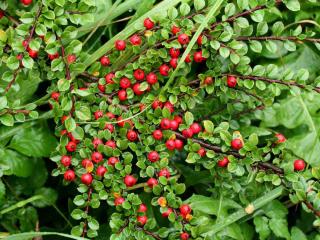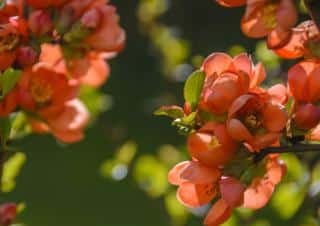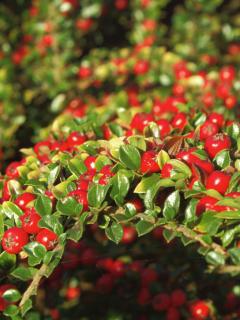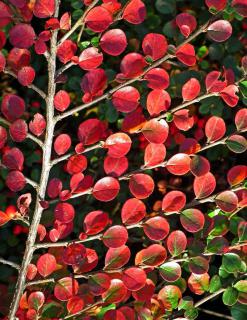

Cotoneaster is a very beautiful shrub, especially appreciated for its berries.
Core Cotoneaster facts
Name – Cotoneaster
Family – Rosaceae
Type – shrub
Height – 1½ to 10 feet (0.5 to 3 meters)
Exposure – full sun, part sun
Soil: ordinary – Foliage: deciduous or evergreen – Flowering: May
Caring for it, from planting to pruning is very easy. This ornamental shrub is a source of joy throughout the year.

In spring, you can still plant saplings purchased in containers, but they will need more regular watering at the beginning.
Cotoneaster is a shrub that you can multiply quite easily. Prefer cuttings, it’s the method that yields the quickest results.
Even though preparing cuttings might seem a little difficult, it still is the best way to propagate this shrub.
Before starting, try to get hold of rooting hormones, this will increase your chances of success.

As is done with most other plants, a timely bout of hoeing will help restrain weed growth. Furthermore, loose soil helps rain trickle down to the roots.
Evergreen species are best pruned at the beginning of spring to shape and balance the shrub to your taste.

In the same manner, you can remodel and prune all deciduous varieties by pruning just before spring growth.
Regular pruning helps keep the shrub dense, ensures nice flowers and thick foliage.
Cotoneaster only needs water in case of strong heat, except for the first year after planting where watering should be constant.
It is also good to water in summer especially if it’s been days since the last rainfall.
Potted cotoneaster, however, has much higher water needs, and you should water as soon as you notice the surface soil dry off.
Quite resistant in the face of many diseases, cotoneaster can however fall victim to fire blight. If this happens, survival chances are, sadly, very low.
Scale insects and aphids occasionally appear in summer. These are the two main cotoneaster parasites.

This plant is also excellent for ground cover. For this specific use, the best variety is Cotoneaster horizontalis.
For hedges, the most appropriate variety is C. franchetii. This taller species is indeed compatible with any shape and height up to 6 to 10 feet (2 to 3 meters) tall.
Its blooming produces small white flowers. Depending on the variety, these sometimes show tinges of pink. In any case, come Spring they’re a favorite source of nectar for honeybees.
At the end of summer and in fall, tiny red berries will cover your shrub. What’s more, they remain on the shrub all winter long. Cotoneaster is a perfect source of winter food for hungry birds.
In winter, tolerance to cold temperatures reaches down to 5°F (-15°C). It resists freezing and is quite hardy.
To save on water, evening is the best time to water potted cotoneaster. Add mineral mulch to the pot.